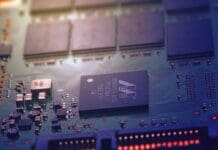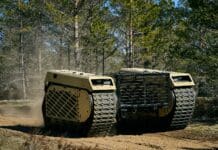
This post is also available in:
 עברית (Hebrew)
עברית (Hebrew)
Unmanned vehicles control systems require a lot of space, and space is at a premium on a US Navy ship. Whether it’s an aircraft carrier or a frigate, you can’t afford to have ground control stations for five or six different types of unmanned vehicles on a ship.
A new unmanned common ground control system developed by Raytheon uses a single, cyber-hardened workstation to operate any of the US Navy’s entire portfolio of unmanned systems, or UxS. That goes for UxS on the sea surface, underwater and in the air. A similar system is already in use by the Navy for its unmanned helicopter, the Fire Scout.
The Raytheon Common Ground Control System uses a modular, open architecture that takes advantage of the Unmanned Aircraft System Control Segment standard, or UCS. This design allows the Navy to rapidly add new features, eliminate redundant software development, reuse common software services, consolidate product support and reduce costs. The system can also easily use other open system standards.
“The beauty of … using the UCS standard is that it can integrate third-party packages for things like mission management, mission planning, maps and graphic user interfaces,” said Bob Busey, Raytheon director of unmanned vehicle control systems.
A Common Ground Control System will also make it easier to train sailors to operate UxSs and control multiple vehicles. For example, an MQ-4C Triton pilot could also fly an MQ-8 Fire Scout or the MQ-25 Stingray. Those Navy operators could also conceivably take the controls of subsurface drones or unmanned surface ships.
Vehicle controls are similar in the Navy’s UxSs, and so are a lot of the functions. They all have sensors, like electro-optical and infrared cameras that aim in different directions and zoom in and out. The commands that tell that sensor what to do are the same whether it’s a Fire Scout or MQ-9 Reaper.
Raytheon’s CGCS is ready to be deployed now, with some of the elements of the UCS architecture being used in other military ground control systems, according to the company’s website.

























